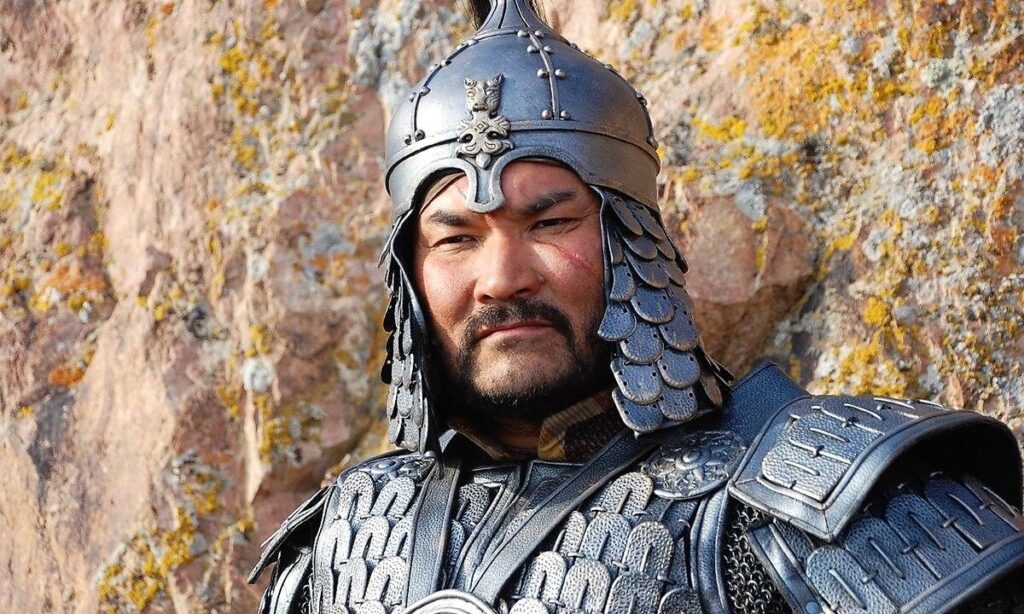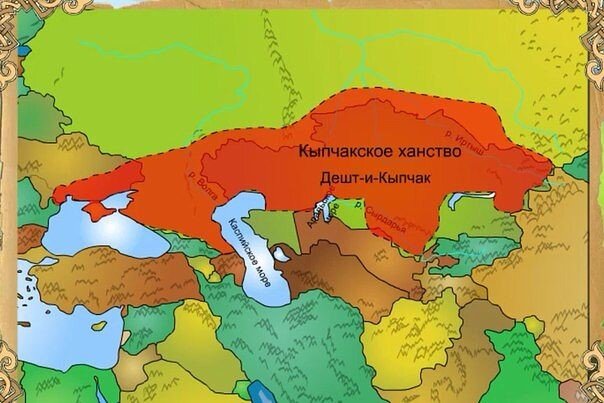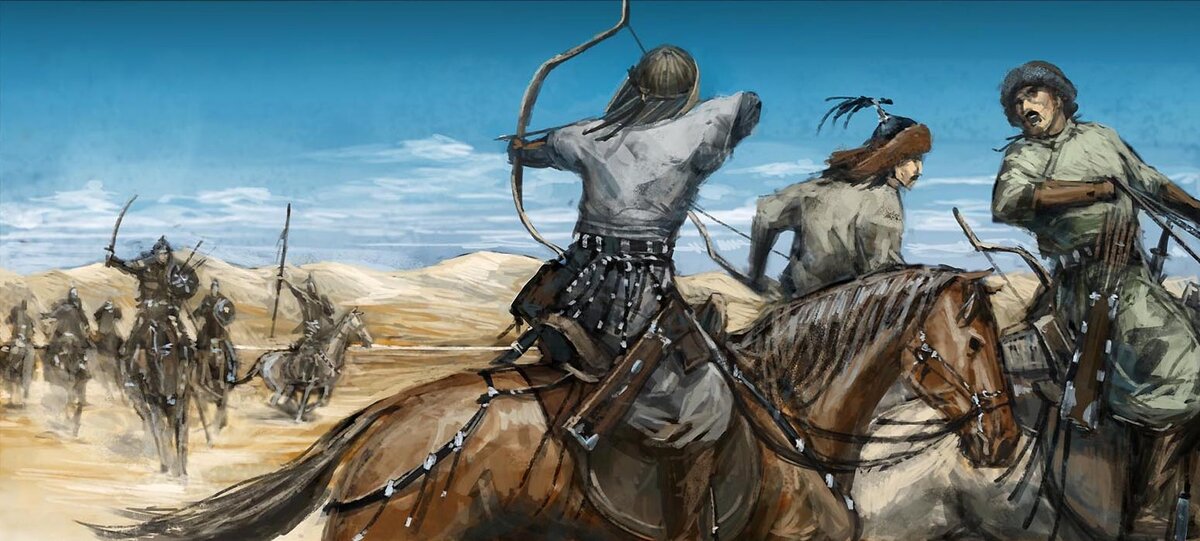The Kipchaks resisted the Mongol invasion for 20 years. Longest. For 20 years the Mongols stubbornly destroyed the Polovtsians (Kipchaks), those stubbornly resisted. There are two reasons for such fury, confirmed by medieval sources.
The first. Blood revenge. The Kipchaks sheltered the defeated Merkits, a tribe from the Mongol homeland in Transbaikalia. The Merkits were Genghis Khan’s worst enemies. They feuded with his clan, attacked his camp, and took his first wife when the young Genghis Khan escaped.
Second. The kinship of the Polovtsian (Kipchak) Kotyan Hagan with another bitter enemy of Genghis Khan, the mother of Khorezmshah Terken-Khatun. And fierce resistance to the Mongols, when the Kipchaks opposed Genghis Khan as part of the army of Khorezmshahs in 1218-1220. Maybe both reasons added up to one.
The Kipchaks are the hosts of the

4 prequel to Invasion to Russia
Kipchaks (Kipchaks) were real masters of Great Steppe. Having come to replace Khazars and Pechenegian, they have grasped huge grounds, have broken set of peoples and the states. After that the Great Steppe at Russians became called Polovetsky, and at Arabs and Asians Desht-i Kipchak.

When Genghis Khan’s Mongols appeared, the Kipchaks were not going to give them the Steppe. The Steppe War would begin in 1222 when Subedei’s search expedition (20-25,000 Mongols) marched into the Caucasus. Subedei searched on the orders of Genghis Khan for Khorezmshah Mohammed.
The Kipchaks entered for their allies, the Alans, when Subedei entered the Caucasus. At this stage of the Mongolian-Slovak vendetta, the Kipchaks had the advantage of strength and sought victory in a single battle.
The first battles
«Yuan-shi» mentions 3 major battles between the Kipchaks and the Mongols. First together with the Alans in the Caucasian valley of Yu-Yu, in a draw. Then alone at Buzzu (Don) and last at Alizzi (Kalka).
After the departure of Subedei up to 1236, the conflict was sluggish, but the hatred was fierce. Polovtsians fought in Volga Bulgaria, plundered the Mongolian border. The end of the Polovtsian people came when the Mongolian darkness of Batyi moved from the East.
Northern right wing in 100 000 sabers under command Batuya has attacked Volga Bulgaria. The southern left wing of 50,000 sabers under the command of the other Chingizids (Buyuk and Munke), attacked the Kipchaks.

The forces were unequal, there were many Mongols. And the Kipchaks changed tactics.
Tactics of steppe vendetta
The battle of the Mongols with the Polovtsians in the steppes was quite different than in Russia or Europe. The Kipchaks had no cities, but a huge Steppe and horses. Kipchaks were the same Mongols in warfare. The same Transbaikalian bows of Mongolian type, methods of warfare, everything is similar. (about tactics, weapons of Mongols and Kipchaks).
In the steppe vendetta that began, where the enemies were almost equal, and light cavalry was against light cavalry, the main element of the battle was maneuvering
Desht-i-Kipchak became the arena of maneuver warfare. The open terrain allowed for maximum cavalry speed. Large masses of Mongol and Cumans mounted archers, equal in skill, chased each other until the first mistake.
The battle of 30-50 000 cavalrymen from both sides took place for weeks on the area of hundreds of kilometers …
The Mongols according to their tactics of roundup drove the Kipchaks in huge spaces, taking advantage of their numerical advantage. All this was accompanied by incessant shooting. When facing the Mongols, the Kipchaks were forced to retreat in large masses in order not to be surrounded.
Kipchaks could not give a frontal fight. Therefore they used weaknesses of the Mongol campaign. The Mongolian army went with a transport, support services. It was slow. Kipchaks in groups broke through like wolves through a hunting corral. Gathered in a lava and attacked the rear, individual thousands.
The Kipchaks switched to guerrilla warfare…
The Mongols’ victory came when the Kipchaks were deprived of maneuver and driven into a limited space (mountains, rivers, valleys, cliffs). Concentration of a large number of cavalry in a limited area led to the end of the roundup.
So, for example, the Mongols surrounded the Kipchaks in the Crimea. Only after the Kipchaks’ forces had thinned considerably from starvation did the Mongols attack their…
Resistance and fear
The Kipchaks resisted the Mongols across the vast steppe. But their ranks were rapidly thawing. The Mongols’ iron discipline, resources and local replenishments seemed inexhaustible.
The onslaught of the 5 tumens of Munke and Buyuk was so powerful that the Kipchak hordes were soon defeated. Already in winter 1237 both tsarevitch were ready to invade together with Batu to Russia.

But as soon as they left, the rebellion of the remaining Kipchaks broke out with renewed vigor. Batu would be forced to throw tumens of them into the Steppe. At the peak of resistance in 1238, the 20,000 corps of Chingizid Munke and his brother Bujek fought against the rebellious Kipchaks.
The rebellions of the Kipchaks did not stop during Batu’s campaign to Southern Russia and Hungary.
Rashid ad-Din writes that in the year of the leopard, corresponding to 639. x. [1241-1242.], the Kipchaks in large numbers went to war on Kutan and on Sonkur, son of Juchi, who, having given battle, defeated the Kipchaks.
The weakness of the Kipchaks was in their independence. Dozens of clans always acted independently, even in times of war. While some Kipchaks were fighting, others were deciding how to be. And constant defeats since 1222 broke the spirit.
Part of the Polovtsians went over to the side of the Mongols and submitted. The most part of Kipchaks — 40 000 people headed by legendary Kotyan (participant of all battles since 1218 from Khorezm to Kalka) went to Hungary. There it settled and dissolved among the locals in less than 100 years.

The irreconcilable clans remained and fought to the end. Batu managed to finally suppress rebellions of Desht-i Kipchak tribes only by 1243.
The 20-year vendetta was finished. The Kipchaks disappeared forever.
A trace in history
But «Kipchak» was always present in the name of the Djuchid power. Ulus Dzhuchi (the western kingdom in Genghis Khan’s empire) was often called «Bulgar and Kipchak», «Khorezm and Kipchak» in eastern chronicles, and its rulers were «kings of Desht-i Kipchak». Many believe that it was not the Kipchaks who dissolved into the Mongols. And the Mongols in them.
In ancient times this state was a country of Kipchaks, but when the Tatars took possession of it, the Kipchaks became their subjects. Then they (Tatars) mingled and interbred with them (Kipchaks), and the land overcame their (Tatars’) natural and racial qualities and they all became exactly Kipchaks, as if they were of the same kind. Because of that the Mongols and Tatars settled in the land of the Kipchaks, intermarried with them and stayed to live in their (Kipchaks’) land. (al-Omari).
Meanwhile, in the villages of Ryazan on the border, dawn was dawning. But suddenly — crows soared into the sky. And the horses scurried about the yards. The darkness moved…
